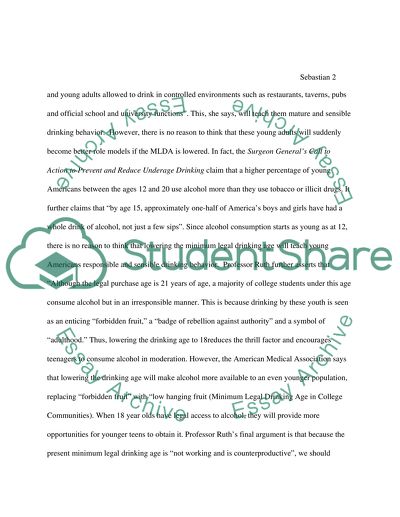Cite this document
(“Should the legal drinking age in the US be reduced to 18 Essay”, n.d.)
Should the legal drinking age in the US be reduced to 18 Essay. Retrieved from https://studentshare.org/sociology/1437016-taking-a-stand-research-paper
Should the legal drinking age in the US be reduced to 18 Essay. Retrieved from https://studentshare.org/sociology/1437016-taking-a-stand-research-paper
(Should the Legal Drinking Age in the US Be Reduced to 18 Essay)
Should the Legal Drinking Age in the US Be Reduced to 18 Essay. https://studentshare.org/sociology/1437016-taking-a-stand-research-paper.
Should the Legal Drinking Age in the US Be Reduced to 18 Essay. https://studentshare.org/sociology/1437016-taking-a-stand-research-paper.
“Should the Legal Drinking Age in the US Be Reduced to 18 Essay”, n.d. https://studentshare.org/sociology/1437016-taking-a-stand-research-paper.


